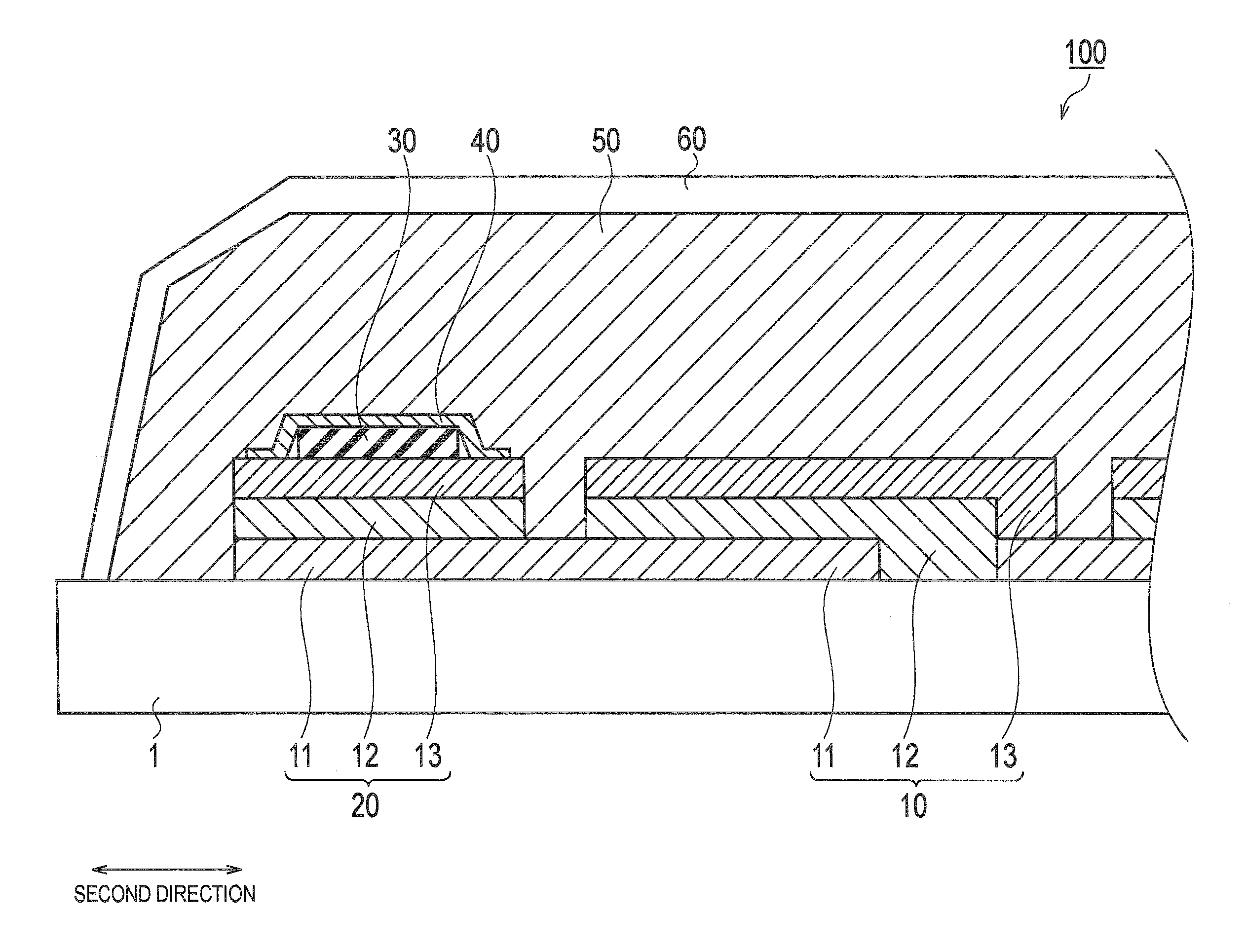Solar cell module
- Summary
- Abstract
- Description
- Claims
- Application Information
AI Technical Summary
Benefits of technology
Problems solved by technology
Method used
Image
Examples
first embodiment
Structure of Solar Cell Module
[0014]A structure of a solar cell module 100 according to an embodiment of the present invention will be described with reference to FIG. 1 and FIG. 2. FIG. 1 is a plan view showing the rear side of the solar cell module 100. FIG. 2 is an enlarged cross-sectional view taken along the line A-A of FIG. 1.
[0015]As shown in FIG. 1 and FIG. 2, the solar cell module 100 includes a substrate 1, multiple solar cells 10, an extracting electrode 20, an extracting wire member 30, an output wire member 35, an insulating film 36, a covering member 40, a bonding layer 50 and a protection member 60. Note that, in FIG. 1, the bonding layer 50 and the protection member 60 are omitted.
[0016]The substrate 1 is a single substrate for forming the multiple solar cells 10 and the extracting electrode 20 thereon. Glass, plastic or the like having an insulation property can be used as the substrate 1.
[0017]Each of the multiple solar cells 10 is formed in a first direction on t...
second embodiment
[0039]Next, a second embodiment of the present invention will be described. The point where this embodiment is different from the above-described first embodiment is the structure of the covering member 40. Other points are the same as the above-described first embodiment, and thus the different point will be mainly described below.
[0040]A covering member 40 according to this embodiment covers the extracting electrode 20 and the extracting wire member 30. Accordingly, as shown in FIG. 3, the extracting electrode 20 and the extracting wire member 30 are not in direct contact with the bonding layer 50. In this manner, the extracting electrode 20 and the extracting wire member 30 are isolated from the bonding layer 50 by the covering member 40.
[0041]Here, the covering member 40 according to this embodiment is a strip-shaped member. A flexible material such as a PET film, and a non-flexible material such as ceramics may be used for the covering member 40. As shown in FIG. 3, the coverin...
PUM
 Login to View More
Login to View More Abstract
Description
Claims
Application Information
 Login to View More
Login to View More - R&D
- Intellectual Property
- Life Sciences
- Materials
- Tech Scout
- Unparalleled Data Quality
- Higher Quality Content
- 60% Fewer Hallucinations
Browse by: Latest US Patents, China's latest patents, Technical Efficacy Thesaurus, Application Domain, Technology Topic, Popular Technical Reports.
© 2025 PatSnap. All rights reserved.Legal|Privacy policy|Modern Slavery Act Transparency Statement|Sitemap|About US| Contact US: help@patsnap.com



